338 results
Higher education astronomy resources for Microsoft Word
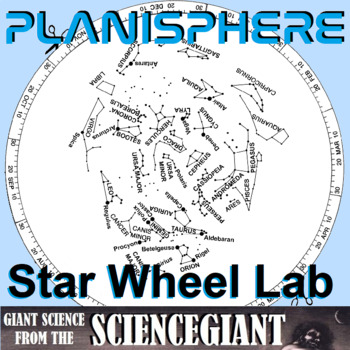
Planisphere Lab Activity: A Star Wheel for Constellation Exploration
Inexpensive and ingenious! Planispheres are a unique tool for learning astronomy: a make-it-yourself star map, adjustable for any time of night in any month of the year. They are designed to show the position of prominent constellations in the night sky. It's a low-tech way for Ss to learn the location (and thus give meaning to key vocabulary terms) of the horizon, zenith, meridian, ecliptic and celestial equator on the celestial sphere. This lab includes two types of planispheres: one for stan
Subjects:
Grades:
6th - 12th, Higher Education
Types:
NGSS:
HS-ESS1-4
, 5-ESS1-2
, MS-ESS1-1
Also included in: StayGiant Earth Science Bundle: Astronomy (space exploration)
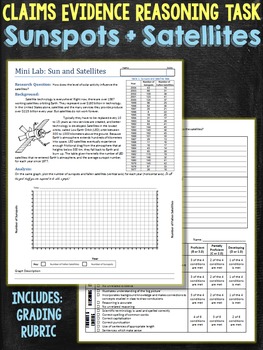
Lab Activity Effect of Sunspots on Satellites (Claims Evidence Reasoning Task)
A short lab activity for astronomy or earth space science. Students make a double line graph of the number of sunspots and the number of crashed satellites in a given year. Then they look for patterns and write a science conclusion utilizing claim, evidence, reasoning scaffolding framework.
Grading rubric and sample student responses are included
This lab activity blends well into a unit on electromagnetic waves, planetary mechanics, or the Sun's influence on Earth.
Subjects:
Grades:
7th - 12th, Higher Education
Types:
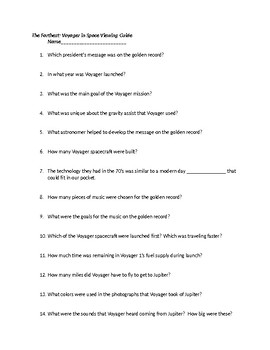
The Farthest: Voyager In Space Video Viewing Guide Editable
If you haven't watched The Farthest: Voyager In Space yet, I highly recommend you do so! It is a wonderful documentary that covers the scientific and cultural significance behind the Voyager spacecraft.
I developed this viewing guide to use with my physics students while showing this video. It asks questions not only relevant to the planets and the mission of Voyager, but also about the scientists who worked on the project, the cultural significance, as well as the Golden Record.
I believe t
Subjects:
Grades:
6th - 12th, Higher Education
Types:
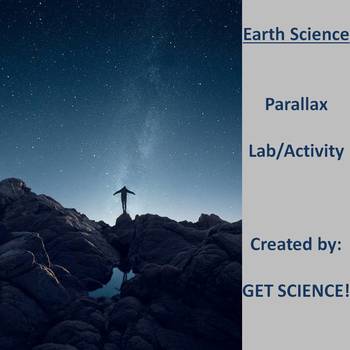
Understanding Parallax
This lab makes understanding parallax simple. Students use real world examples and draw so that parallax can be visualized. The concept is reinforced throughout. A summary YouTube video is included. My students completely understood the concept after this lab!You may edit this lab, the answer key is provided.Educating the World Together!Get Science
Subjects:
Grades:
8th - 12th, Higher Education
Types:
Also included in: Astronomy Lab Bundle
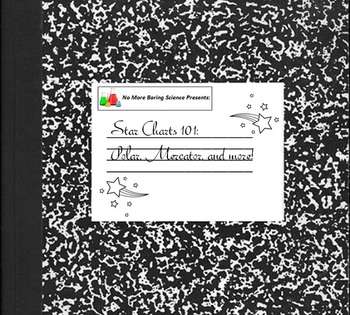
Astronomy/Earth Science Lab Series - Using Star Charts to find Constellations
New from No More Boring Science - How to use star charts! The focus of this lab is to help students gain confidence using star charts to find constellations. There are two activities in this lab: using a polar star chart map to find constellations on a blank section of the sky, and then translating constellations from a polar projection map to a mercator projection map. The first activity is more advanced than the second, but all maps and charts are included. Keys are included as well!
If you l
Subjects:
Grades:
7th - 12th, Higher Education, Adult Education
Types:
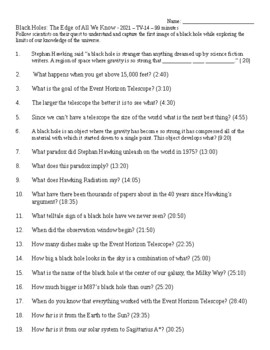
Black Holes: The Edge of All We Know Movie Guide W/ Answer Key 2021 TV-14
Black Holes: The Edge of All We Know - 2021 – TV-14 – 99 minutesFollow scientists on their quest to understand and capture the first image of a black hole while exploring the limits of our knowledge of the universe.40 questions with time stamps (2 pages) Answer Key (3 pages)
Subjects:
Grades:
9th - 12th, Higher Education
Types:
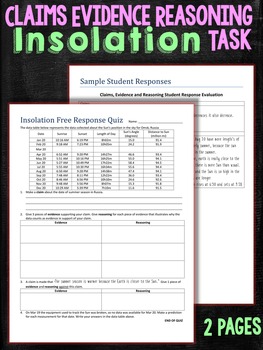
Claims Evidence Reasoning Task Insolation Seasons Quiz Assessment
Assessment task used to measure students ability to come up with a claim then support it with evidence and reasoning.
This task gives students data, and they use the data to come up with their claim, give evidence and reasoning. In addition students come up with evidence and reasoning against a given claim.
Topic: Seasons
Subject: Earth Space Science or Physical Science or Environmental
Standards Alignment: NGSS and Common Core Math and Literacy
Select a simple hypothesis, prediction, or concl
Subjects:
Grades:
6th - 12th, Higher Education
Types:
CCSS:
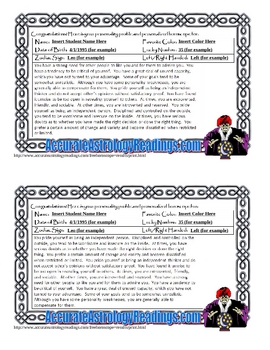
Astrology Vs. Astronomy Experiment (Gag on Students!)
To show the difference between Astronomy (science) and Astrology (a belief system that the stars and planets are connected to our daily lives), here is a great demonstration that gets the students involved to see the difference firsthand.
Procedure:
1. Tell students to take out a scrap piece of paper and write down the following:
Name
Date of Birth
Their Zodiac Sign (if known)
Their Favorite Color
Their Lucky Number
And if they are Left/Right Handed.
None of these things actually matter, but
Subjects:
Grades:
10th - 12th, Higher Education, Adult Education
Types:

Constellations Lab
I was about to lecture on constellations this year and realized that perhaps the students could teach themselves by using Stellarium-web.org, where they can move and manipulate the sky. I created this worksheet/guide for them to follow! It worked great and they enjoyed it. I had to give them some verbal help, but overall it was much more effective than a lecture. You will need computer access for your students, although you could do it as a demo on a smartboard but that would be less effecti
Subjects:
Grades:
7th - 12th, Higher Education, Adult Education, Staff
Types:

Cosmos (1980/2014/2020) Doc Viewing Guide: Summaries/Vocabulary/Questions- KEY
EARTH DAY! "Cosmos" is a widely popular science documentary TV series hosted by astrophysicist Neil deGrasse Tyson. It explores the mysteries and wonders of the universe, covering a wide range of scientific topics such as astronomy, cosmology, astrophysics, and astrobiology. Through stunning visuals, engaging storytelling, and scientific explanations, "Cosmos" takes viewers on a cosmic journey to understand the origins of the universe, the formation of stars and galaxies, the history of our plan
Subjects:
Grades:
6th - 12th, Higher Education, Adult Education
Types:
Also included in: Global Warming/Climate Change/Environment Viewing Guide BUNDLE with KEYS

Moon Phases/Lunar Cycle Foldable
Students can use this foldable to shade in the dark portion of the moon in order to demonstrate and predict the sequence of events in the lunar cycle.
Subjects:
Grades:
1st - 12th, Higher Education, Adult Education

Concept Compare: Kepler's (and Newton's) Laws of Planetary Motion for Orbits
This concept comparison is between: Kepler's Laws of Planetary Motion, and how they relate to Newton's Laws of Motion and the Law of Universal Gravitation. Bring a calculator!The Concept Comparison Routine is used help compare and contrast key concepts. Specifically, students use like and unlike characteristics and categories shared and not shared by two or more concepts to better understand the overall concept. Students taught using the Content Enhancement routines earned higher total test scor
Subjects:
Grades:
7th - 12th, Higher Education
NGSS:
HS-ESS1-4
Also included in: StayGiant Earth Science Bundle: Astronomy (space exploration)
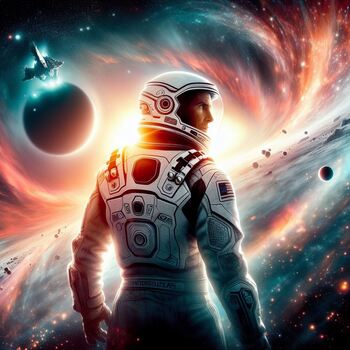
Interstellar (2014) Science Class: Movie Viewing Guide: Summary/Questions w/KEY
Using "Interstellar" in a high school science class offers a rich opportunity to explore various scientific concepts and theories while engaging students through a captivating narrative. Here's a rationale for its use:Exploration of Physics Concepts: "Interstellar" delves into numerous physics concepts, such as relativity, gravitational time dilation, black holes, and wormholes. By analyzing these concepts as depicted in the film, students can gain a deeper understanding of fundamental principle
Subjects:
Grades:
7th - 12th, Higher Education, Adult Education
Types:
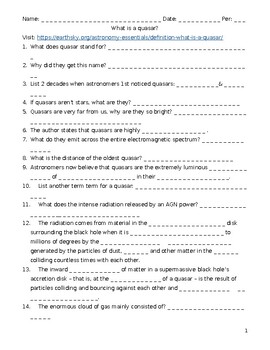
What is a quasar? Webquest
Students will learn all about quasars in this web quest. They will learn the origins of a quasar as well as when they were first discovered. They will also learn that quasars are very bright, young galaxies and the energy they emit is from a supermassive black hole.Kindly leave a review of my work; it will help me create future products.Thanks so much.Ms. D.
Subjects:
Grades:
6th - 12th, Higher Education, Adult Education, Staff
Types:
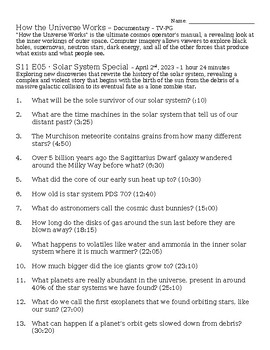
How the Universe Works Season 11 Episode 5 Solar System Special
How the Universe Works – Documentary – TV-PG "How the Universe Works" is the ultimate cosmos operator's manual, a revealing look at the inner workings of outer space. Computer imagery allows viewers to explore black holes, supernovas, neutron stars, dark energy, and all of the other forces that produce what exists and what people see. S11 E05 · Solar System Special – April 2nd, 2023 – 1 hour 24 minutesExploring new discoveries that rewrite the history of the solar system, revealing a complex and
Subjects:
Grades:
9th - 12th, Higher Education
Types:
Also included in: How the Universe Works Season 11 - 5 Episode Bundle Movie Guides
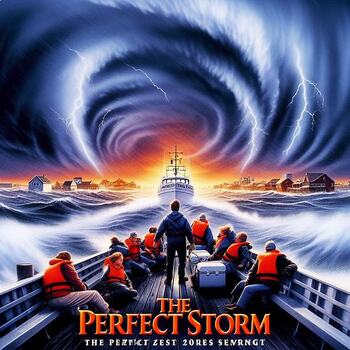
Science of The Perfect Storm (2000) Movie Viewing Guide: Summary/Questions
"The Perfect Storm" is a dramatic film based on the true story of the Andrea Gail, a commercial fishing vessel caught in the midst of a massive storm off the coast of New England in October 1991. As the crew of the Andrea Gail, led by Captain Billy Tyne, sets out for one last fishing expedition of the season, they encounter increasingly treacherous weather conditions. Meanwhile, other boats in the area face similar challenges as the storm intensifies into a perfect storm, a rare meteorological e
Subjects:
Grades:
9th - 12th, Higher Education, Adult Education
Types:
Also included in: High School Resources: George Clooney Movies Viewing Guide BUNDLE
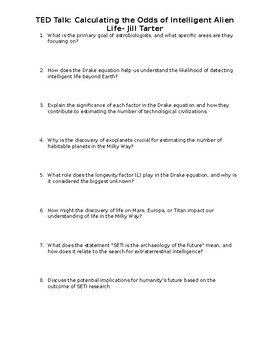
TED Talk: Calculating the Odds of Intelligent Alien Life- Jill Tarter
In this engaging TED Talk, students will dive into the fascinating world of astrobiology and the search for extraterrestrial intelligence (SETI). They will learn about the Drake Equation, a powerful tool used to estimate the number of technological civilizations in the Milky Way Galaxy with whom we could make contact. Through thought-provoking discussions on factors such as star formation, habitable planets, and the development of intelligent life, students will explore the complexities of estim
Subjects:
Grades:
9th - 12th, Higher Education, Adult Education
Types:

ASTEROIDS: ASTRONOMY QUIZ FOR H.S.& COLLEGE W/ANS. KEY
This is a factual t/f quiz about the world of asteroids. It contains interesting and pertinent information in astronomy. An answer key is provided. Thanks for visiting and supporting our humble shop. Excelsior!
Subjects:
Grades:
9th - 12th, Higher Education, Adult Education
Types:

TED Talk: A Needle in Countless Haystacks: Finding Habitable Worlds- Ariel Anbar
Explore the wonders of our universe with this captivating resource on space exploration and habitable worlds. Designed for high school and college-level students, this assignment delves into the search for extraterrestrial life, focusing on the key characteristics of habitable planets. Students will discover the significance of water, atmosphere, and distance from a star in determining a planet's potential to support life. They will also explore the complexities of identifying habitable worlds,
Subjects:
Grades:
9th - 12th, Higher Education, Adult Education
Types:
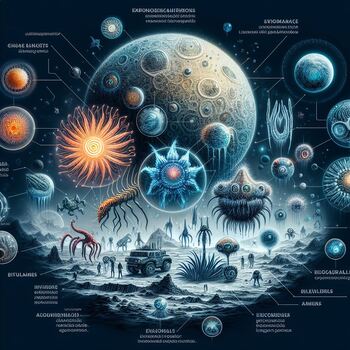
EXPLAINED (2018): Extraterrestrial Life: Series Viewing Guide: Questions w/KEY
Explained (2018): Extraterrestrial Life explores the possibility of extraterrestrial life in its episode dedicated to the subject. From the vastness of the universe to the discovery of exoplanets, the series delves into the scientific search for life beyond Earth. It examines various theories and methods used by astronomers and astrobiologists to detect signs of life on other planets, including the study of extremophiles on Earth and the exploration of Mars. The episode also discusses the implic
Subjects:
Grades:
7th - 12th, Higher Education, Adult Education
Types:
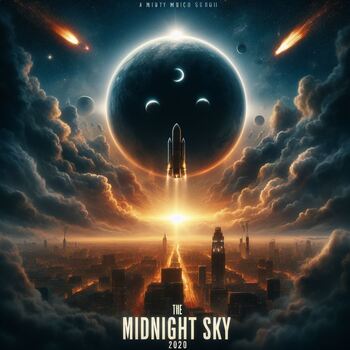
Science of The Midnight Sky(2020)Movie ViewingGuide:Summary/Vocabulary/Questions
"The Midnight Sky" is a post-apocalyptic science fiction film directed by and starring George Clooney. Set in the year 2049, it follows Augustine Lofthouse, a lonely scientist stationed in the Arctic, who discovers that a catastrophic event has occurred on Earth, rendering it uninhabitable due to a global catastrophe. Augustine embarks on a perilous journey to a nearby weather station in hopes of contacting a group of astronauts returning from a mission to Jupiter's moon, hoping to warn them not
Subjects:
Grades:
9th - 12th, Higher Education, Adult Education
Types:

How the Universe Works Season 3 Episode 1 Journey from the Center of the Sun
How the Universe Works - 2010 ‧ Documentary ‧ 9 seasons "How the Universe Works" is the ultimate cosmos operator's manual, a revealing look at the inner workings of outer space. Computer imagery allows viewers to explore black holes, supernovas, neutron stars, dark energy, and all of the other forces that produce what exists and what people see. S03 E01 · Journey from the Center of the Sun - Jul 9, 2014 – 51 minutesThe filmmaker shows how light escapes from the sun. Starting from its fiery bi
Subjects:
Grades:
7th - 12th, Higher Education
Types:
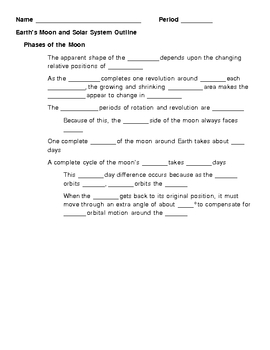
Earths Moon and Solar System Astronomy Notes Outline Lesson Plan
This 11 page notes outline Lesson Plan has blanks for student to fill in as the students watch the 'Earths Moon and Solar System Astronomy PowerPoint Presentation' and as the teacher covers the following topics:
Phases of the Moon, Eclipse of the Moon, Eclipse of the Sun, Angular Diameter, Angular Diameter of the Sun, Angular Size and Shape of Orbit, The Tides, The Geometry of Orbits, Calculating Eccentricity (elongation) of an ellipse, The Force of Gravity, Gravity and the Planets, Planets of
Subjects:
Grades:
7th - 12th, Higher Education
Types:
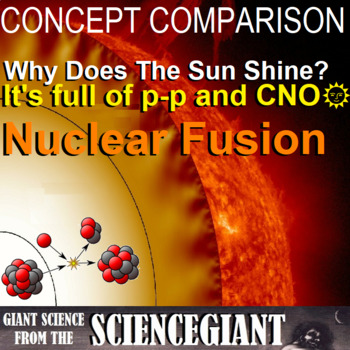
Concept Compare: Why Does the Sun Shine? Thermonuclear Fusion! (p-p and CNO)
This Concept Comparison of Thermonuclear Fusion contrasts proton-proton (p-p) chain reactions, and the "cold" carbon-nitrogen-oxygen (CNO) cycles. Help Ss communicate scientific ideas about the way stars produce elements over their life cycle. Emphasis is on the way nucleosynthesis, and therefore the different elements created, varies as a function of the mass of a star and the stage of its lifetime. As cosmologist Carl Sagan famously said, “We are made of star stuff.” And we literally are! We a
Subjects:
Grades:
8th - 12th, Higher Education
NGSS:
HS-PS1-8
, HS-ESS1-3
, HS-ESS1-1
Also included in: StayGiant Earth Science Bundle: Astronomy (space exploration)
Showing 1-24 of 338 results





